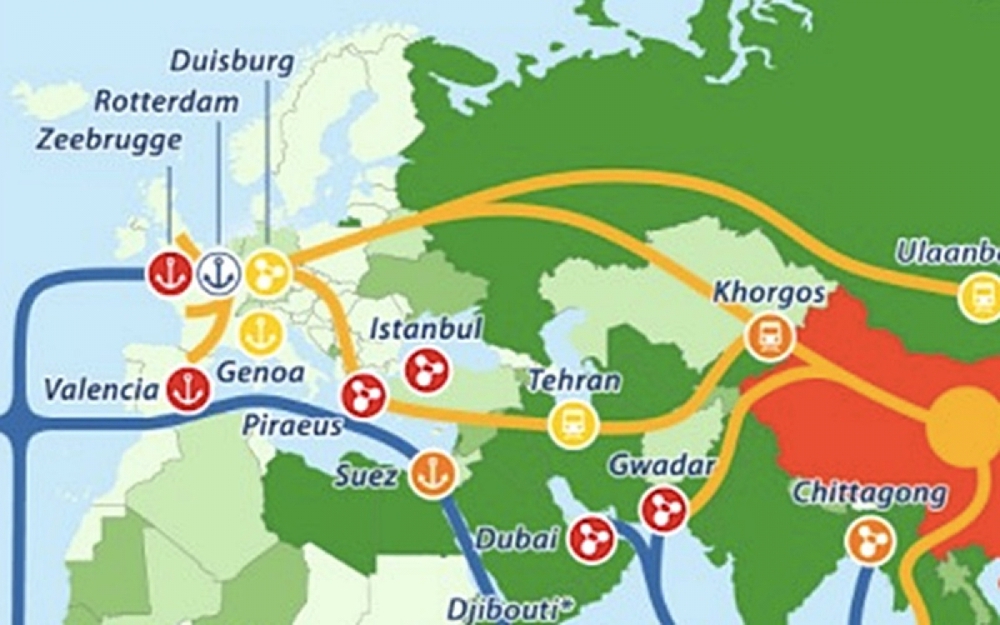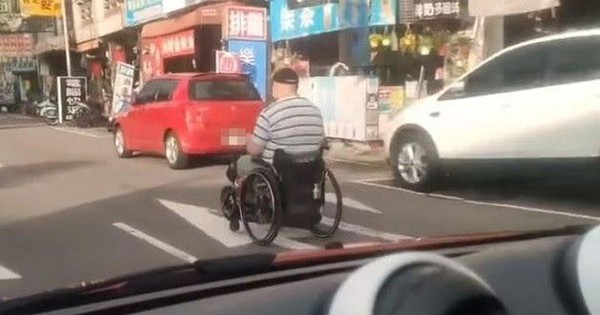“Geoeconomics” is simply defined as the intersection of economics and geography. Some examples include infrastructure-based connectivity initiatives such as the Belt and Road (BRI) of China, the Eurasian Economic Union (EAEU) of Russia, the Global Gateway of the European Union, the Blue Dot Network (BDN) of the United States, or the International North-South Transport Corridor of the United States. Russia, Iran, and India.

China’s BRI. Graphics: Belt and Road Research Platform.
Revolving around the Eurasian-African geography, China’s BRI megaproject is currently the world’s largest geoeconomic initiative, involving 140 countries. However, the current Russo-Ukrainian war threatens to profoundly reshape this initiative.
Disruption in Russia and China’s countermeasures
For China, Russia’s vast expanse is the most reliable overland route to the rich EU market. Russia, Ukraine, Poland, and Belarus all hope to be part of the New Eurasian Overland Bridge – a vision connected mainly by rail. Now these land connection dreams have been nullified by the fierce battle raging in Ukraine . This is a real headache for China.
Formula 17+1, a BRI cooperation platform between China and 17 Central and Eastern European countries, has suffered setbacks due to many factors, including tension and separation in relations between China and China. Country and America. And now the confrontation between the West and Russia and Belarus on the one hand as well as the destruction of Ukraine’s infrastructure during the military conflict between Russia and Ukraine has destroyed the short-term and long-term prospects. term of this 17+1 platform. This is yet another problem for China.
In the short term, China must go back to basics. The China-EU connection will have to rely more heavily on traditional maritime routes, which are more stable and reliable than road or rail networks. Please note that more than 80% of global trade is still conducted through maritime routes. China’s enthusiasm for rail connectivity will be severely affected at this stage.
Looking further, China must avoid passing through Russian, Belarusian, and possibly Ukrainian territory. At that time, the other corridors of BRI will inevitably play a more important role in the connection between China and the EU. The Central Asia-West Asia Corridor (CAWA) is likely to become more important in China’s thinking.
By transiting through Central Asian countries, the Caspian region, Iran, and Turkey, the BRI was able to avoid Russia and reach Europe.
The renewed potential for the Iran nuclear deal and the recently signed 25-year China-Iran agreement strengthens the role of the CAWA corridor. The current Russo-Ukrainian war could accelerate these processes and upgrade CAWA’s standing.
Under the present circumstances, Iran’s geo-economic role can be greatly improved thanks to the following two advantages: (1) Iran’s geographical location is centrally located, and (2) Iran’s oil and gas after The lifting of sanctions will become attractive to the EU, which can be seen as an alternative to Russian energy.
Another option for China is to rely more heavily on the China-Pakistan Economic Corridor (CPEC) connected to the Indian Ocean. This corridor also connects Iran and Turkey via road and rail (Islamabad-Tehran-Istanbul line). China may therefore choose to further integrate CPEC and the CAWA corridor, and strengthen China-Pakistan-Iran connections to reach Europe via the mainland.
China’s Option 2
If it wants to avoid both Russia and Iran, China’s BRI could connect with Turkey’s Central Corridor – a geo-economic initiative that includes the Caspian region and Central Asian countries. Turkish policymakers regularly tout the potential for a combination of their initiative and the BRI of Turkey China .
In the long term, Russia is highly likely to promote its own geoeconomic initiative (EAEU) to further consolidate its influence in the countries that were once part of the Soviet Union. The EAEU includes Russia, Belarus, Kazakhstan, Armenia, and Kyrgyzstan. These Russian partners are unlikely to comply with Western sanctions, and the EAEU will have to rely on a trading regime that primarily deals with the Russian ruble. It is likely that Russia will push for the creation of a monetary union in the region – an idea that Russian President Putin, Belarusian President Lukashenko, and other leaders have promoted for years.
The EAEU will have to expand cooperation and trade with whoever is still interested in doing business with Russia. Iran is one such choice, with a pivot to Asia under new President Ebrahim Raisi and a favorable trade deal with the EAEU. Iran hopes to turn the deal into a free-trade deal. India – a country with a large economy and not opposed to Russia’s attack on Ukraine, is another option. New Delhi wants to profit from cheap Russian oil and is looking for alternative payment methods to circumvent Western sanctions against Russia.
Iran is eager to connect after a long period of sanctions. Russia is heavily sanctioned, so it is very important to find an economic way out. India is geographically surrounded by China and Pakistan. Therefore, all three countries wish to have a land connection with Eurasia through Iran’s Chabadar Port. They are both motivated to accelerate the development of the International North-South Transport Corridor (INSTC). This initiative also has the participation of Central Asian countries that want to reach out to international waters through the land of Iran.
Through the multimodal INSTC, Russia is able to deepen its connections with the Caspian region, the Middle East, Asia, and Africa. Many parties in the region have been silent about Putin’s military campaign against Ukraine, so not all trade doors are closed to Russia.
In the long term, Russia’s strategic proximity to China’s economic and financial institutions and their services is a viable option in the short term for Russia to withstand the sharp shock of sanctions. of the West.
Sanctions are only a short-term tactic compared to geoeconomics
After international credit card companies MasterCard and Visa leave Russia, China’s UnionPay payment system is expected to replace the other methods. This is a sign of the “new era” agreement that China and Russia recently signed and promoted shortly after Russia invaded Ukraine. In the long term, the economic and geographical potential of Russia and the EAEU can be absorbed by the Chinese economy and the geography of the BRI. If left unresolved, the unintended consequences of Russia-Western separation will cause strategic headaches for the West in the long term.
Here there is friction. China, or more broadly East Asia, is key to any strategic analysis of the current crisis in Europe. There is a global divide between the geopolitical power of the West (especially the US) and the geo-economic power of East Asia (especially China). In response to Russia’s military campaign in Ukraine, the US, EU and their allies must take this separation into account in order to avoid or mitigate unwanted negative consequences.
There is also another layer of complexity that must be taken into account, which is the difference between economics (trade, finance, sanctions, etc.) and geoeconomics (economy combined with geography).
Some commentators downplay the role of the Russian economy due to its small size (2 or 3%) in the global economy. However, they forget that Russia’s geoeconomic power is far more significant than its economy. One cannot deny the vast geography of Russia which occupies a substantial part of the Eurasian continental block. Economic sanctions are easier than geographical sanctions. Geoeconomics involves long-term strategic thinking, while sanctions are a short-term tactical move. Sanctions may hurt Russia terribly at the moment but do not answer long-term strategic questions. Such sanctions could even backfire, as demonstrated by China and Saudi Arabia’s negotiations to replace the petroleum dollar with the petroleum yuan (i.e., switching from payment for oil purchases in USD to USD). payment in yuan).
at Blogtuan.info – Source: Soha.vn – Read the original article here



